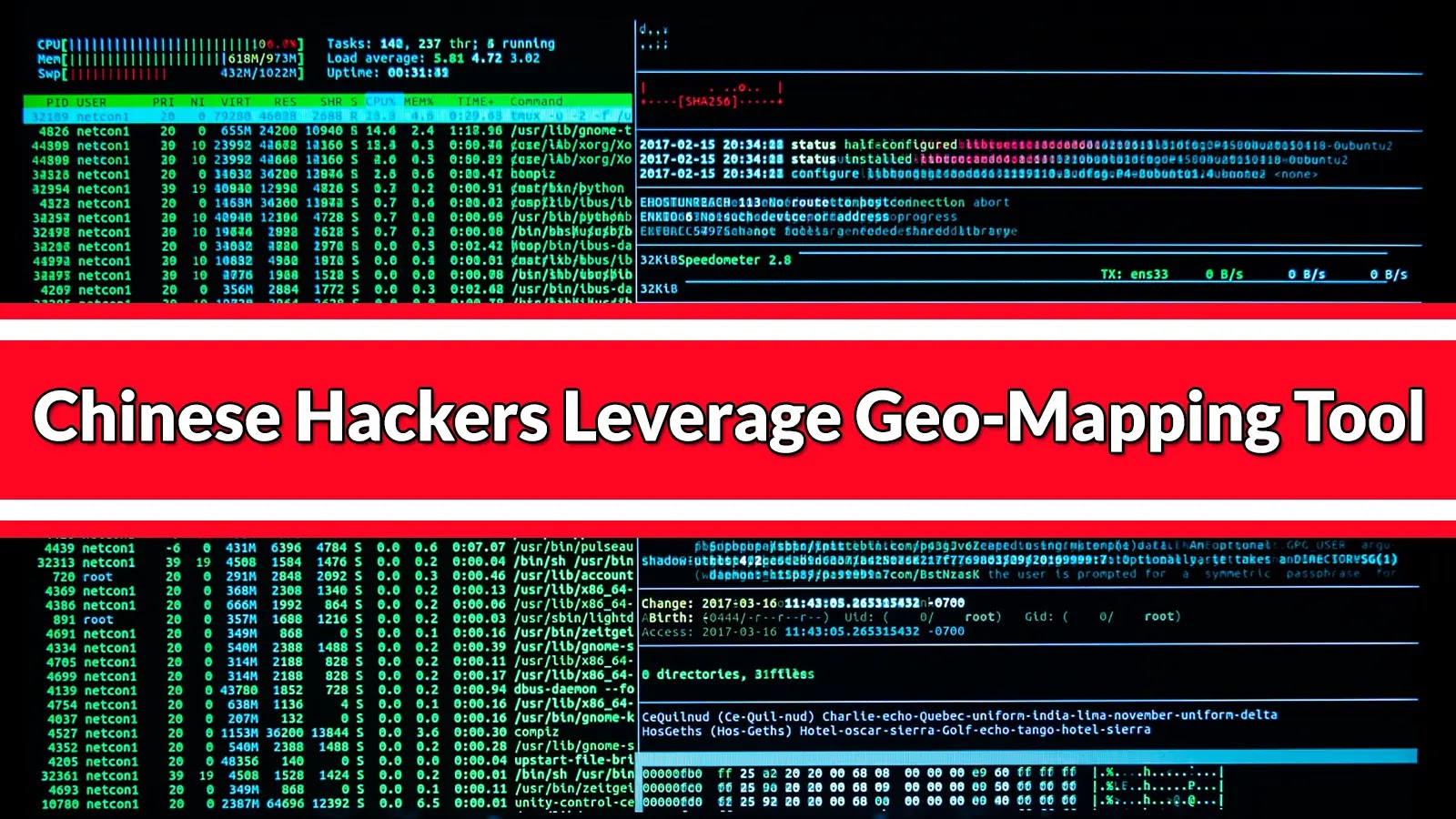
Chinese Hackers Leverage Geo-Mapping Tool to Maintain Year-Long Persistence
A disturbing trend has emerged in the cybersecurity landscape: Chinese threat actors are leveraging sophisticated geo-mapping tools to maintain year-long persistence within critical infrastructure and enterprise networks. This advanced malware campaign, initially observed targeting vital sectors across Asia and North America, highlights a significant escalation in stealth tactics employed by state-sponsored groups.
The Evolving Threat Landscape: Geo-Mapping Malicious Campaigns
The cybersecurity community is increasingly on high alert as the full scope of this geo-mapping-enabled campaign comes into focus. Unlike previous campaigns that often relied on brute force or readily detectable methods, these Chinese threat actors have meticulously integrated publicly available geo-mapping technologies with their custom malware. This blend of off-the-shelf tools and bespoke malicious code allows them to establish and maintain a persistent presence, often going undetected for extended periods. This level of sophistication signifies a strategic shift towards more enduring and insidious forms of cyber espionage and sabotage.
Anatomy of the Attack: How Geo-Mapping Enables Persistence
The core of this attack vector lies in the clever use of geo-mapping technology. While the exact details of the unique blend of tools remain under wraps, cybersecurity analysts surmise that the geo-mapping aspect could serve several critical functions:
- Adaptive Command and Control (C2): By integrating geo-mapping, the malware can intelligently determine its location relative to legitimate network traffic or even physical infrastructure. This allows for dynamic C2 communication, making it harder for security tools to flag anomalous connections. For instance, C2 servers might only activate when the compromised system is within a specific geographical perimeter, or use geographical data to select the least suspicious communication pathways.
- Stealthy Data Exfiltration: Geo-mapping could be used to segment or prioritize data exfiltration based on location. Critical data from specific regions or facilities could be siphoned off using different, localized methods, thereby evading broad-stroke network monitoring.
- Environment Awareness: The malware likely uses location data to understand the operational context of the compromised environment. This allows for more targeted attacks or data collection, making the malicious activities appear more legitimate within the network’s natural flow.
- Long-Term Persistence Mechanisms: Leveraging geo-spatial data can help the attackers understand network topology and potential failover points. This enables them to embed persistence mechanisms that are robust and resilient to basic remediation efforts, ensuring access even after initial detections.
The prolonged network penetration, lasting for a year or more in some observed cases, underscores the effectiveness of these advanced stealth tactics. This duration allows threat actors to thoroughly map network architecture, identify high-value targets, and extract sensitive information over an extended period without immediate detection.
Impact on Critical Infrastructure and Enterprise Networks
The targeting of critical infrastructure and enterprise networks is particularly concerning. Compromises in these sectors can lead to:
- Operational Disruptions: Direct interference with industrial control systems or key operational technologies, potentially leading to outages or failures.
- Economic Espionage: Theft of intellectual property, trade secrets, and sensitive business strategies from corporations.
- National Security Risks: Exfiltration of classified information or manipulation of critical systems that could impact national security.
- Supply Chain Compromise: Infiltrating one organization to gain access to its partners and customers, creating a broader risk network.
Remediation Actions and Proactive Defense
Organizations must adopt a proactive and multi-layered defense strategy to counter such sophisticated attacks. Here are key remediation actions:
- Enhanced Network Segmentation: Implement strong network segmentation to limit the lateral movement of malware if a breach occurs. This should include micro-segmentation where feasible, isolating critical systems and data.
- Advanced Threat Detection: Deploy Endpoint Detection and Response (EDR) and Extended Detection and Response (XDR) solutions capable of detecting subtle anomalies and behaviors indicative of advanced persistent threats (APTs), rather than just signature-based detections.
- Security Information and Event Management (SIEM) Optimization: Ensure your SIEM solution is configured to aggregate and analyze logs from all critical assets, looking for suspicious patterns in conjunction with geographical data or unusual communication flows.
- Regular Vulnerability Management: Continuously scan for and patch vulnerabilities, including those in network devices, applications, and operating systems. While no specific CVEs have been publicly linked to the geo-mapping tool itself, addressing known vulnerabilities like CVE-2023-xxxx (replace with a relevant, high-impact recent CVE if applicable, otherwise omit specific CVE for this blog post) in your infrastructure reduces potential entry points.
- Ingress/Egress Filtering: Implement robust firewall rules and intrusion prevention systems (IPS) to scrutinize all inbound and outbound traffic, looking for unusual C2 patterns or data exfiltration attempts.
- User Awareness Training: Educate employees on phishing, social engineering, and the importance of strong security hygiene to prevent initial compromise.
- Threat Intelligence Integration: Subscribe to and actively leverage threat intelligence feeds that provide insights into the tactics, techniques, and procedures (TTPs) of Chinese state-sponsored groups.
- Incident Response Plan: Develop and regularly test a comprehensive incident response plan to ensure rapid and effective containment, eradication, and recovery in the event of a breach.
Tools for Detection and Mitigation
| Tool Name | Purpose | Link |
|---|---|---|
| CrowdStrike Falcon Insight | Advanced EDR for threat detection and response | CrowdStrike |
| Splunk Enterprise Security | SIEM for security analytics and incident investigations | Splunk |
| Palo Alto Networks NGFW | Next-generation firewall with advanced threat prevention | Palo Alto Networks |
| Vectra AI Cognito Detect | AI-driven network detection and response | Vectra AI |
| Microsoft Defender for Endpoint | Comprehensive endpoint security solution | Microsoft |
Conclusion
The deployment of geo-mapping tools by Chinese threat actors to maintain year-long persistence marks a significant evolution in cyber warfare. This sophisticated approach underscores the need for organizations to move beyond traditional perimeter defenses and adopt an adaptive, intelligent security posture. Investing in advanced threat detection, proactive vulnerability management, and robust incident response capabilities is no longer optional but a critical imperative for safeguarding essential infrastructure and sensitive data against these persistent and stealthy adversaries.





